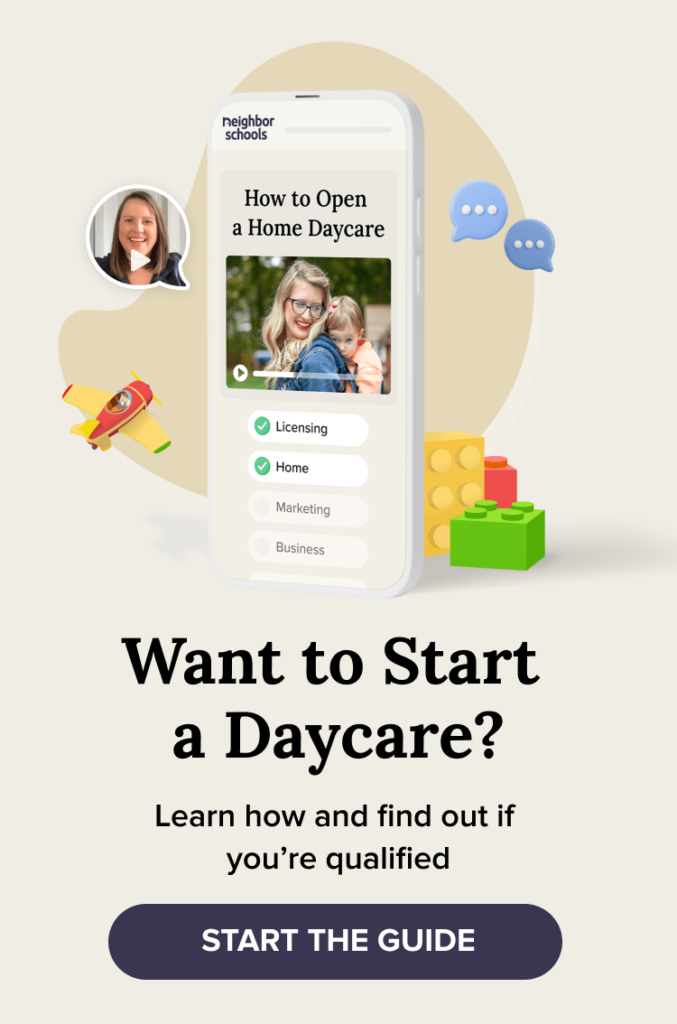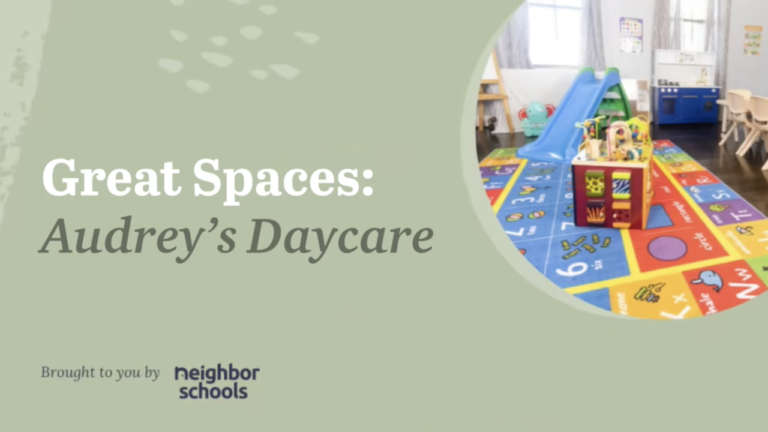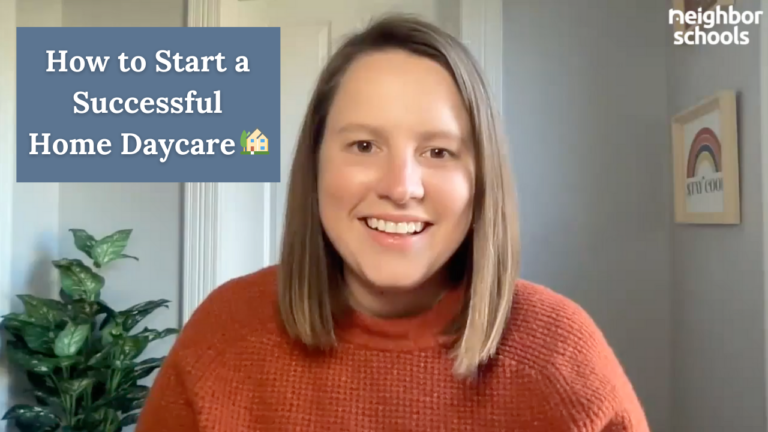Wondering if starting a home daycare is worth it? We get it.
Of course you need to know if your time, money, and hard work will pay off! If you’re quitting your job to start a daycare, you need to make sure the trade-off makes sense. Or maybe you need some information to show your spouse that dedicating a part of your home—your personal space—is the right move.
In other words, you need to figure out if owning a home daycare is profitable.
But here’s the thing: if you Google how much a daycare Provider makes, you’ll notice that the salaries on Payscale or ZipRecruiter are all over the place. And they may be a little lower than you were expecting, too. What gives?
It turns out that those numbers are misleading and a bit meaningless. Why? Because everyone’s situation is different. How much you’ll make will depend on your location, experience, licensed capacity, and personal expenses.
Think about it:
- A brand new Provider licensed for 6 kids will make less than an experienced Provider who’s licensed for 10.
- A Provider with 2 kids of their own in their daycare will make less than a Provider who doesn’t.
- A Provider who lives in an expensive city or suburb will make more than a Provider who lives in a rural area.
In this post, we’ll explain what exactly goes into determining your revenue and show what 3 real-life Providers actually made in 2021.
But if you want to know exactly how much you would earn by opening a home daycare, we can help. Check out our guide on How to Open a Home Daycare and we’ll be able to help you with an earning potential based on where you live, how many kids you’ll have in your program, and other factors like your experience and home setup.
How much money do you make running a home daycare?
There are a handful of factors that can affect how much a home daycare Provider makes. Here are the most common ones:
1. Location
Where you live matters. Ideally, you want parents nearby who are willing to pay for high-quality child care. We tend to see that the more populous an area is, the more competitive the child care market. Usually, Providers in these markets can set their rate at least 1.25x more than their rural counterparts.
But if you live in a more rural area, you might find that it takes more time to fill your open spots. Plus, your pay might not be as high as someone who lives in a higher income area like the city or suburbs.
2. Capacity
New Providers usually start with a license for up to 6 kids—with some rare exceptions. This is the case in Massachusetts, and other states have a similar policy.
But when we say “up to 6 kids”, this means you can only have six enrolled kids at a time in your daycare space. Most of our Providers who have a license for 6 actually have more than 6 kids enrolled. How? As you’ll see in our real-life examples below, they take on a bunch of part-timers!
It’s typical to charge a higher daily rate for part-time children than you would for those enrolled full-time. By mixing and matching enrollments to your licensing capacity, you can make more money and serve more parents in your community.
As you grow in your career as a Provider, you can request to increase your capacity to 8 or even 10 children. Higher capacity = more revenue.
3. Age Ranges
If you’re a parent, you probably know that child care for an infant costs more than it does for a preschooler. That’s because an infant requires constant attention and care. But that can also mean increasing resources and hiring an extra set of hands to help out, which can raise your operation cost.
A preschooler usually doesn’t need as many resources, which can be less stressful and less costly, but they typically don’t bring in as much revenue.
Below you’ll see that Providers usually have different rate tiers for infants (8 weeks to 14 months), toddlers (15 months to 2.8 years), and preschoolers (2.9 to kindergarten).
Your daycare’s age range is your preference. We know Providers who love working with 1 or 2 infants at a time. We know others who enjoy having a daycare full of older kids of the same age. Either way, your daycare’s age range will influence your revenue.
4. Your Own Children
So many Providers start a daycare to spend more precious time at home with their own little ones. It’s a huge perk of the job, plus it helps you put the money you would’ve spent on child care into your own pocket.
But if you think about capacity, each kid of your own in your daycare will take a full-time spot. It’s something to keep in mind when trying to figure your potential revenue.
5. Expenses
Starting a home daycare is an investment. To get up and running, you’ll have to buy furniture, supplies, sensory materials, books, and more. If you leave it there at the basics, the typical home daycare startup cost is about $3000. But some Providers invest even more by repairing or renovating their homes, which can add hundreds or even thousands of dollars to your startup budget.
This is all to say that if you put money into starting your daycare, it might take some time to break even. By keeping it simple in the beginning and spending around $3,000, you should be able to break even after your first month of having a few enrollments.
How Much Did Home Daycare Providers Make in 2021?
Now for the fun stuff! We’ll walk through what 3 different Providers actually made in 2021, broken down by enrollments and location, so you can see how it all works.
Provider #1: Licensed for 6
Location: Haverhill, MA (City)-
Enrollment Breakdown
-
2 yr old - Full-time - $325/week
-
20 mo old - Part-time (1 day) - $75/week
-
3 yr old - Part-time (3 days) - $195/week
-
11 mo old - Part-time (4 days) - $300/week
-
23 mo old - Part-time (3 days) - $130/week
-
20 mo old - Part-time (1 day) - $75/week
-
18 mo old - Part-time (4 days) - $300/week
-
20 mo old - Part-time (1 day) - $75/week
Provider #1 Summary:
This Provider lives in a small city in northern Massachusetts, and only has one full-time.But they also have a bunch of part-timers—7!—to fill up the majority of the spots for the week.
All of the kids in their daycare are under the age of 3.
Provider #2: Licensed for 6
Location: Auburn, MA (Rural)-
Enrollment Breakdown
-
19 mo old - Full-time - Their child
-
3.5 yr old - Full-time - Their child
-
2 yr old - Full-time - $275/week
-
16 mo old - Full-time - $275/week
-
23 mo old - Part-time (4 days) - $220/week
-
2 yr old - Part-time (2 days) - $120/week
Provider #2 Summary:
This Provider has 2 kids of their own, so even though they make less than the others, they’re saving costs on child care that they otherwise would’ve paid for themselves.Plus, all of the kids enrolled are 2 years old or younger, which is around the same age of their own kids—making planning their daycare program a bit easier.
Provider #3: Licensed for 6
Location: Westborough, MA (Suburb)-
Enrollment Breakdown
-
18 mo old - Full-time - $275/week
-
18 mo old - Full-time - $275/week
-
20 mo old - Full-time - $275/week
-
2 yr old - Part-time (3 days) - $165/week
-
2 yr old - Part-time (3 days) - $165/week
-
2 yr old - Part-time (2 days) - $110/week
-
18 mo old - Part-time (3 days) - $165/week
Provider #3 Summary:
This Provider has a 4:3 split between full-time and part-time kids.Plus, all of their kids are under the age of 2, but they’re not infants either—so they don't need to split her attention or hire an extra set of hands to tend to them.
All of this put together, along with their location, makes them the top earner out of the three.
Is a home daycare profitable?
As you can see from the real-life examples above, home daycares can generate a good amount of revenue. But whether or not you’re profitable depends on your costs and the number of your own children taking up spots. What you make as a Provider is unique to you—it’s a combination of your location, capacity, age ranges, and family situation.
To understand how much of an investment opening a home daycare is, check out our article on startup costs and how to set a budget.
As far as revenues go, we can help you find out your exact earning potential. Start the guide below and we’ll help you understand how how much you could earn.







